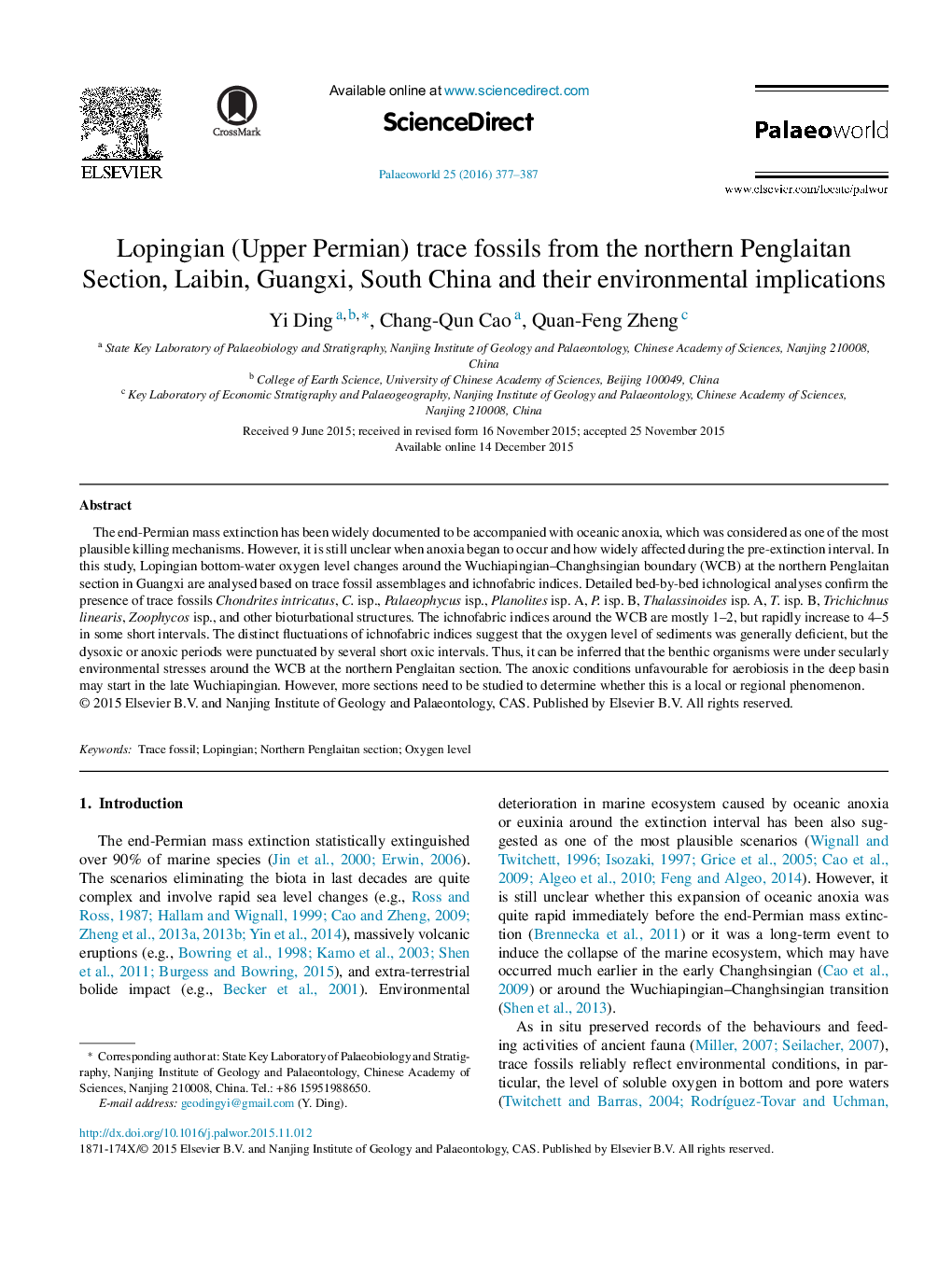| Article ID | Journal | Published Year | Pages | File Type |
|---|---|---|---|---|
| 4749595 | Palaeoworld | 2016 | 11 Pages |
The end-Permian mass extinction has been widely documented to be accompanied with oceanic anoxia, which was considered as one of the most plausible killing mechanisms. However, it is still unclear when anoxia began to occur and how widely affected during the pre-extinction interval. In this study, Lopingian bottom-water oxygen level changes around the Wuchiapingian–Changhsingian boundary (WCB) at the northern Penglaitan section in Guangxi are analysed based on trace fossil assemblages and ichnofabric indices. Detailed bed-by-bed ichnological analyses confirm the presence of trace fossils Chondrites intricatus, C. isp., Palaeophycus isp., Planolites isp. A, P. isp. B, Thalassinoides isp. A, T. isp. B, Trichichnus linearis, Zoophycos isp., and other bioturbational structures. The ichnofabric indices around the WCB are mostly 1–2, but rapidly increase to 4–5 in some short intervals. The distinct fluctuations of ichnofabric indices suggest that the oxygen level of sediments was generally deficient, but the dysoxic or anoxic periods were punctuated by several short oxic intervals. Thus, it can be inferred that the benthic organisms were under secularly environmental stresses around the WCB at the northern Penglaitan section. The anoxic conditions unfavourable for aerobiosis in the deep basin may start in the late Wuchiapingian. However, more sections need to be studied to determine whether this is a local or regional phenomenon.
